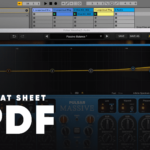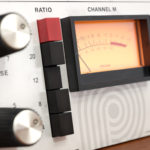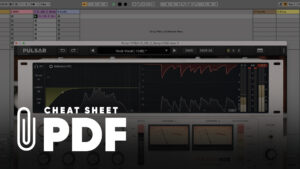Variable Mu Compression: How it Works and When to Use it
- Posted on

Go behind the scenes on a transparent, musical and downright legendary form of tube compression
Variable mu compressors are mixing and mastering processors that have been used for decades, originating in hardware units that were called upon for their creamy, tube-based analogue squeeze. It’s a favourite tool of mastering engineers, as its smooth and clear compression style is perfect for glueing mixes together without adding saturation or altering the original signal too much.
Despite its popularity, some confusion exists over what a variable-mu compressor actually is. Though Manley have a trademarked compressor called the Variable Mu, which first became available in the 1990s, variable-mu compression technology had already existed since the 1950s. Famous variable-mu compressors from that time include the much loved Fairchild 660 and 670, and the Altec 436B.
In this article we’ll clear up all the uncertainty and cover the contexts in which variable-mu compressors tend to be used, as well as the characteristics of variable-mu compression that make it so unique. If the sound of legendary tube compression is for you, get the polish and glue of variable-mu in your DAW with our very own Pulsar Mu.

What is variable-mu compression?
One of the best ways to understand variable-mu compression is to break down what the words ‘variable-mu’ actually mean. In the audio engineering realm, the greek letter μ (or mu) refers to gain. Therefore, variable-mu simply means “variable gain”, or “changing gain”. .
Variable mu compressors utilise vacuum tubes as the central point of their gain reduction control circuit. Usually compressors use vacuum tubes for amplification in the makeup gain stage, however in the case of variable-mu compressors vacuum tubes are used as attenuators.
As the input signal being fed into the compressor increases in amplitude, the current being sent to the vacuum tube’s grid decreases, which reduces the output level of the compressor. As a result, variable-mu compressors can be referred to as “variable gain” or “delta mu”, where delta simply refers to a difference in quantity. You’ll also see variable-mu shortened to “vari-mu”.
For a full circuit diagram and a more in depth explanation of this compression process make sure to read our article on Variable-Bias Compression Explained.
The characteristics of Vari-mu compressors
The unique architecture of variable-mu compressors gives them distinctive sonic characteristics that other compressor types struggle to achieve. These characteristics lend variable-mu compressors to particular uses, which we’ll delve into in the next section. For now, let’s focus on how vari-mu compressors actually sound.
One consequence of the variable-mu design is that vari-mus are program-dependent compressors. This means that rather than having a dedicated ratio control, the ratio of the compressor varies as the input signal changes. The ratio can be controlled by altering the threshold of the compressor, but once the signal crosses the threshold, the circuitry dictates the ratio of the gain reduction.

In fact, the ratio increases as the amplitude of the input signal increases. This gives a smooth compression curve, otherwise known as a soft knee, which is a quality that vari-mu compressors are known for. This smoothness is compounded by the fact that these compressors tend to have slow attack and release times. The combination of slow attack and release, and variable ratio, make variable-mu compressors stand out for their ability to glue mixes together, as transients aren’t tended to as harshly as they might be with other compressor models.
As well as being known for their clarity, these analogue units can be used to add a dollop of saturation if desired. The gain reduction of the vari-mu’s circuit produces pleasant harmonic breakup if pushed hard. By setting the threshold to a high value and cranking the input to the max, you’ll start to notice extra harmonic information, particularly on transients.
The vacuum tubes used in vari-mu compressors also add some colouration even when the compressor is operating at low level compression settings. Tubes distort audio no matter the level at which it’s driven through them, although the more you crank it, the greater the distortion will be.

When to use variable-mu compression
As discussed earlier, one of the most common uses of variable-mu compression is in the mastering process. Variable-mu compression can provide real glue to a track, bringing dynamics together and helping to create a cohesive feel. This is mainly thanks to the program dependent nature of vari-mu units, which we’ve looked at already.
To hear variable-mu compression in action on a master bus, check out this video demonstrating Pulsar Mu, our faithfully emulated software version of the classic variable-mu compressor, fully optimised for the digital world. Skip ahead to 0.25 seconds to hear some comparisons with and without Pulsar Mu on the master bus.
The glueing abilities of modern vari-mu compressors also mean that they work great on submixes. Drum busses in particular can benefit from the use of a vari-mu as they unite individual drum tracks and help the kit sound like the one instrument that it’s meant to be.
If you want some inspiration on how to use a variable-mu compressor, a good place to start is with the presets in Pulsar Mu. Here you will find compressor presets organised by instrument, and within each instrument each preset is named after a specific use case. The presets also have a gain reduction level to aim for so you can be sure you’re using it correctly.

As we mentioned at the top of this article, vari-mu compression is a time-honoured method of dynamic range compression.. In the 1950s and 1960s the go-to unit was the Fairchild 660 and 670. These classic compressors have more than stood the test of time, and a plugin version of either is a common feature of many audio professional’s arsenal all these years later.
Part of what helped establish the Fairchild as a studio essential was its use on most of the Beatles’ recordings post 1964. Fairchilds were used to treat John, Paul, George and Ringo’s (yes, Ringo’s) vocal takes, as well as the guitar and drum tracks. In a modern context though, you probably wouldn’t want to use a Fairchild 660 or 670 as a primary mastering

Variable-mu is its own neighbourhood in the wider township of compression, and like anything else, different units from different manufacturers and eras will have their own uses in your production workflow. On that note, may we suggest you check out our list of The best analog compressors of all time, and how to get them in software?




